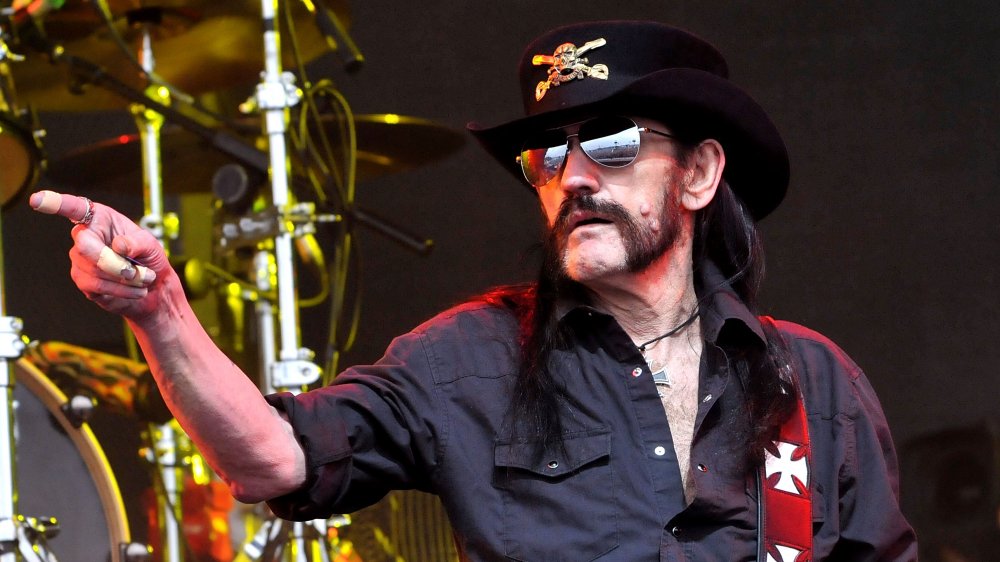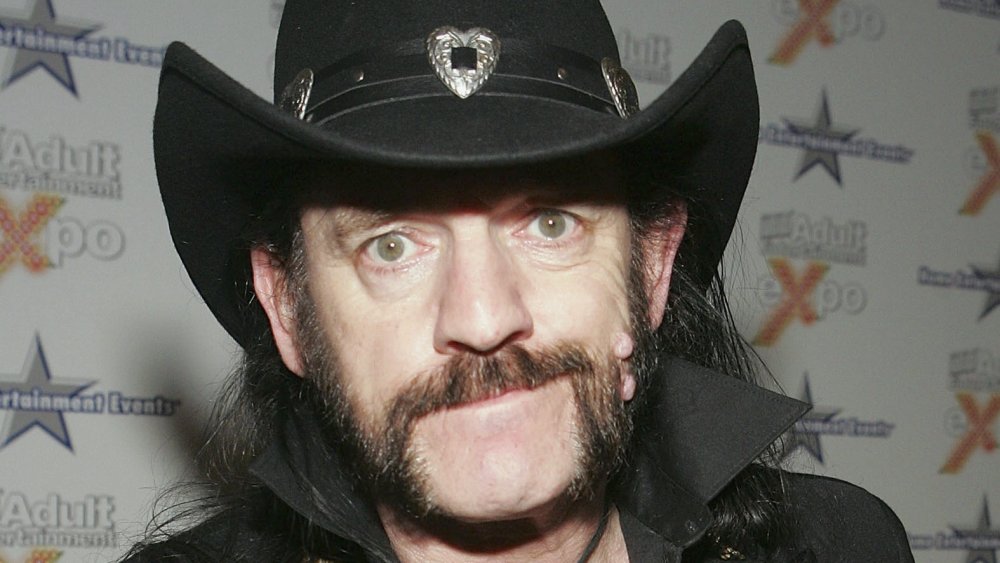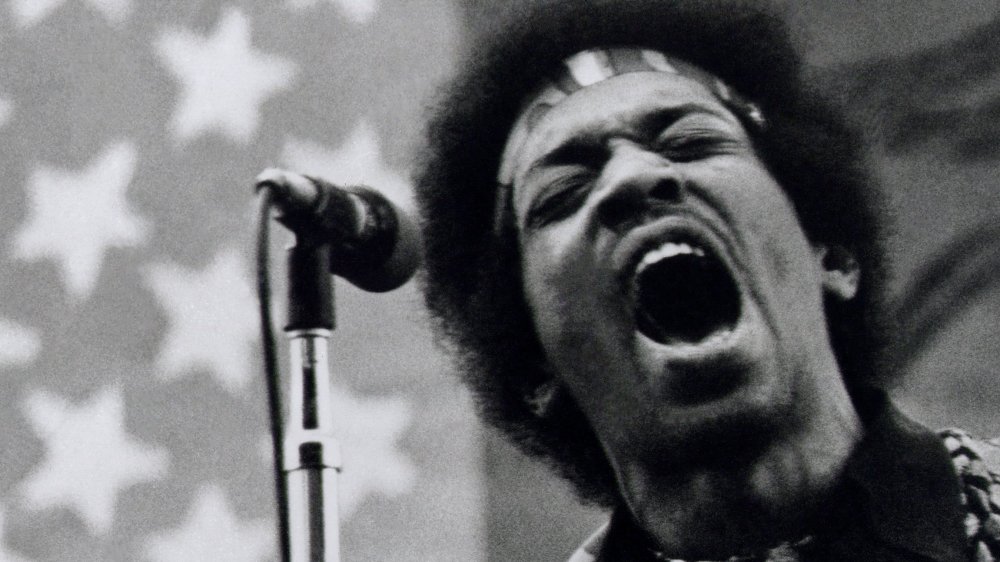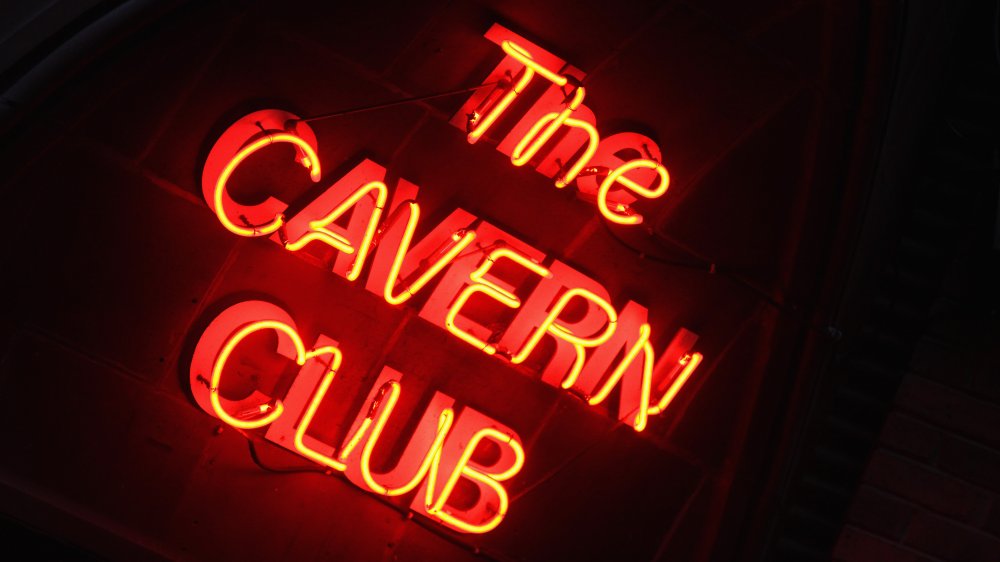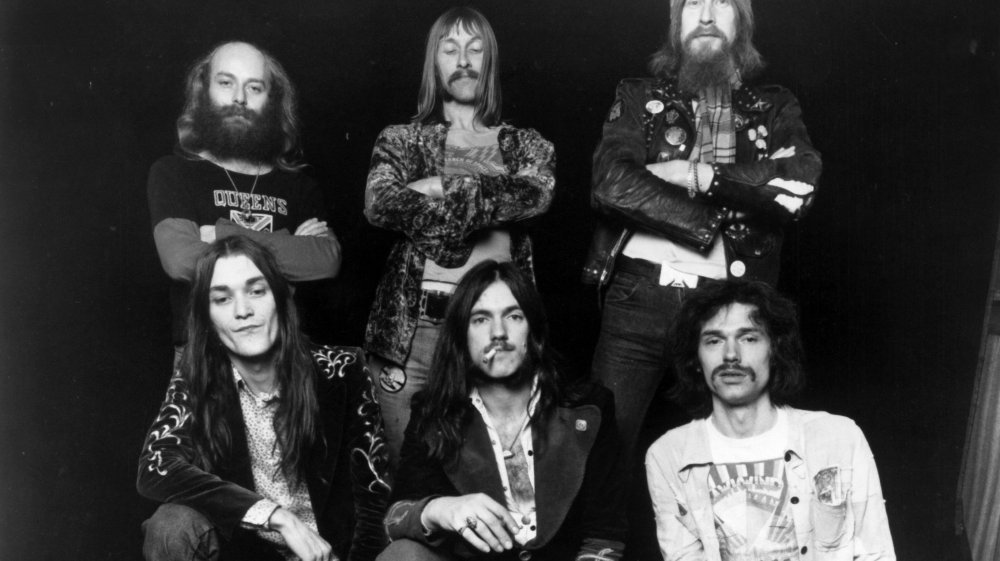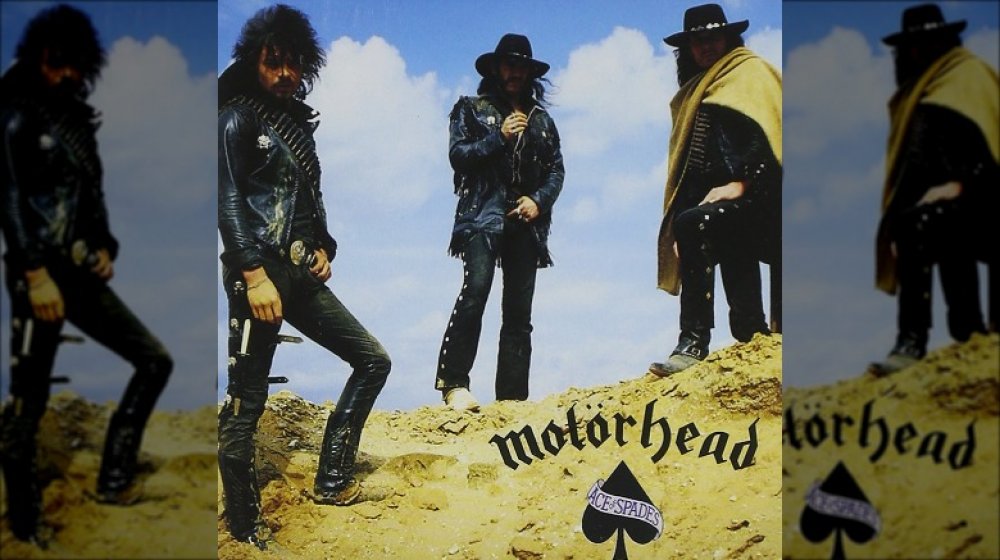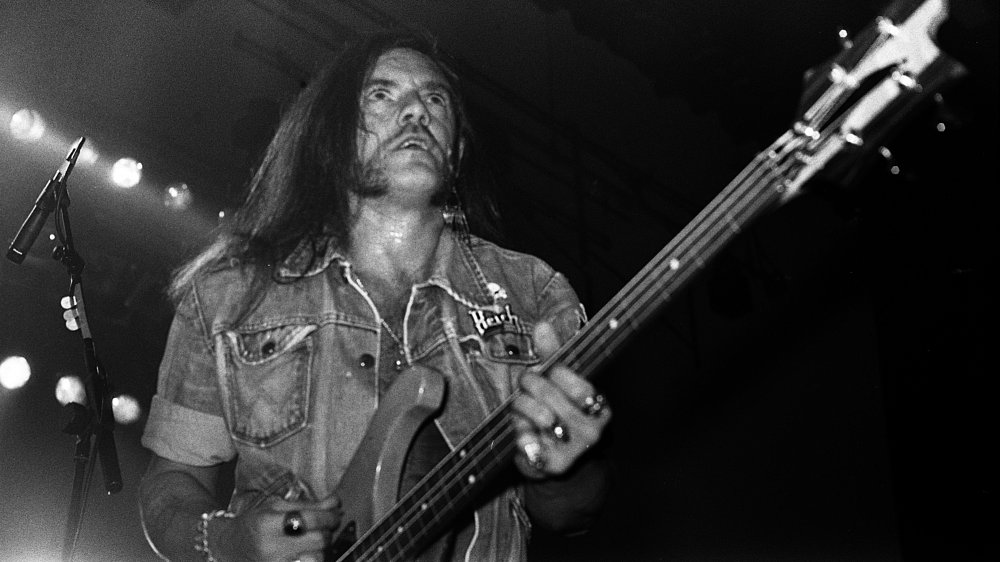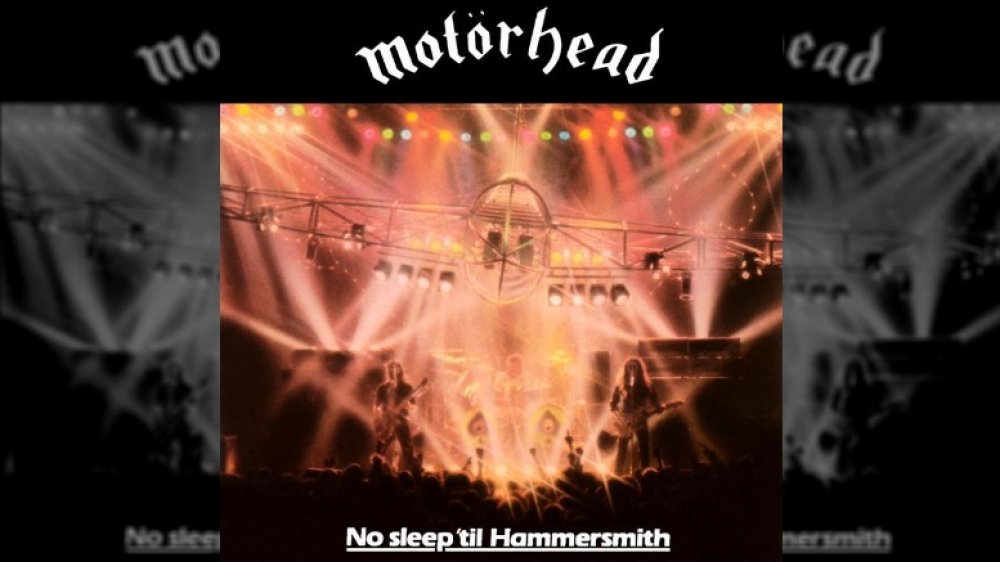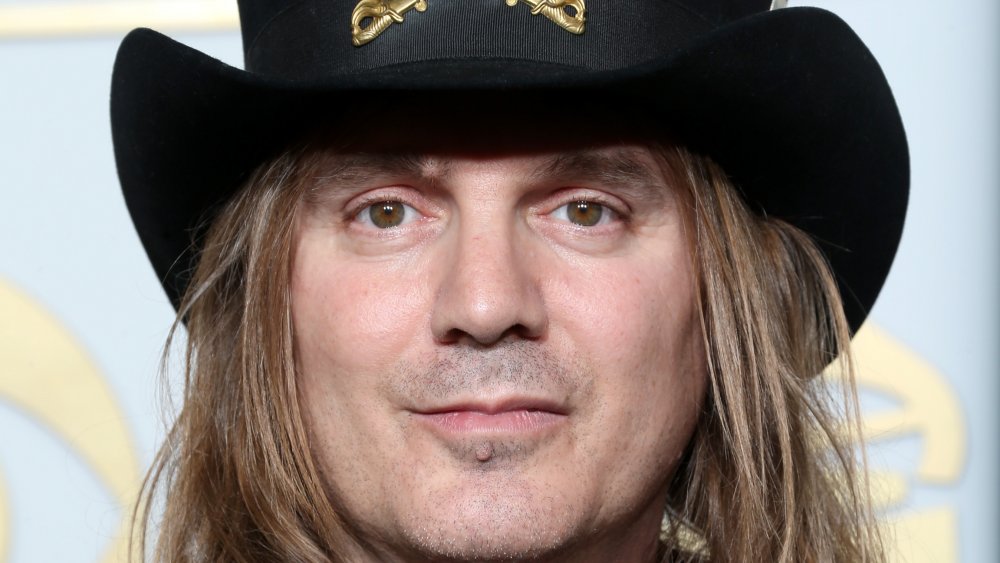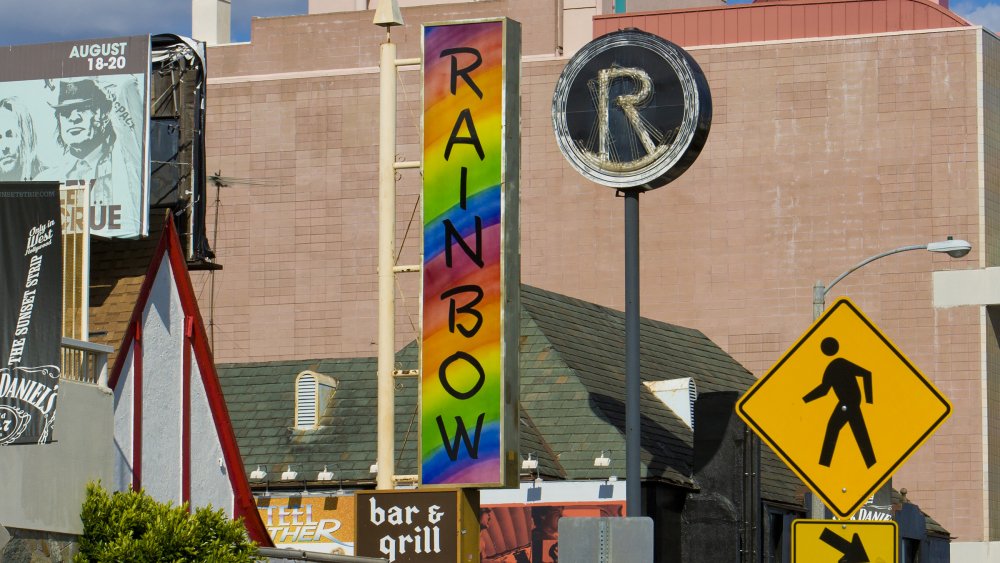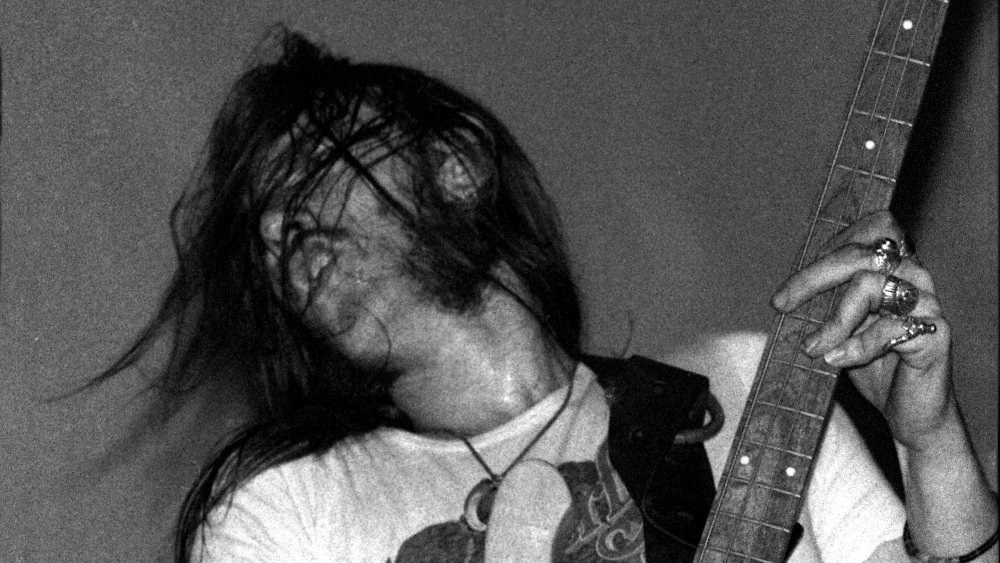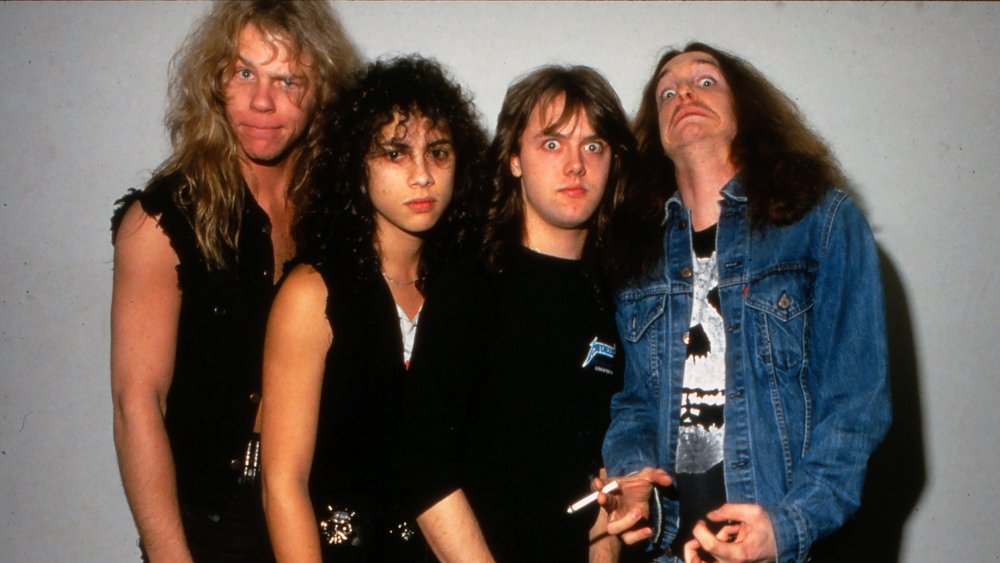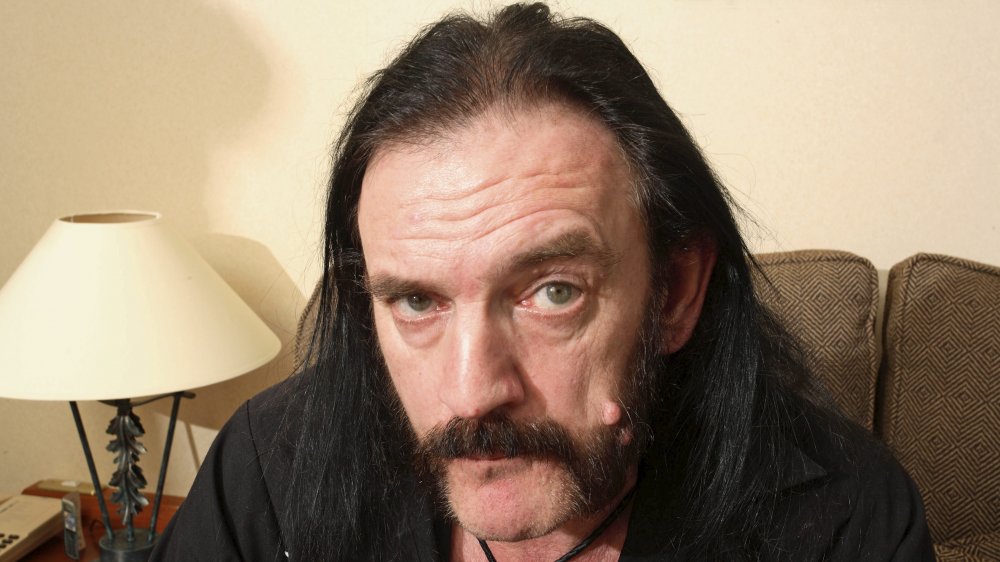Things Fans Want To See In The Lemmy Biopic
We may receive a commission on purchases made from links.
With the critical acclaim of Freddie Mercury biopic Bohemian Rhapsody, the success of Mötley Crüe's Netflix smash hit The Dirt, and the massive production value of Elton John life story Rocketman, it's obvious that fans around the world want to finally see their favorite rock stars brought to life on the big screen. According to Screenrant, David Bowie, Elvis, and Bob Marley all have their biographical movies in the works. But while many of these films promise the glamour and widespread appeal that made Bohemian Rhapsody an Oscar-winner, one star's recently announced biopic has a more rough-around-the-edges fanbase screaming with excitement: that of Lemmy, frontman of speed metal forefathers Motörhead.
Born Ian Fraser Kilmister, Lemmy became world-famous both for his fearsome snarls with his band and his complete dedication to the rock star lifestyle, including a heroic intake of booze and speed. While other musicians were appearing on TV apologizing for their sex addiction and showing off their Los Angeles mansions, Lemmy was juggling girlfriends, sucking down bottles of Jack, and releasing 23 studio albums with Motörhead before his death on December 28, 2015. Because of this, fans will want to see the entire ugly, no-nonsense truth about one of heavy metal's most iconic figures. Here are 12 things that any headbanger would insist on being featured in Lemmy's movie.
A real performer playing Lemmy
Because most rock biopics focus on their subjects' salad days as young, up-and-coming musicians, the tendency is to cast attractive young actors and models in their roles, such as Kristen Stewart portraying Joan Jett in 2010's The Runaways or Machine Gun Kelly playing Tommy Lee in The Dirt. But even in his youth, Lemmy's broad shoulders, barrel chin, and twin warts on his left cheek kept him from ever being a pretty boy. Not only that, but his inimitable accent and no-nonsense attitude will be hard to imitate by anyone who doesn't have a ton of experience.
As such, what the Lemmy biopic needs is a true performer playing the role — someone whose ability as an actor allows them to take on the unique persona of the Motörhead frontman. The person portraying Lemmy will have to either be grizzled to a fine crisp or able to transform completely into the character via makeup and vocal work. According to Movieweb, Billy Bob Thornton, who knew the singer and appeared in the documentary Lemmy, said he could play the role with the aid of a wig, while wrestler and Motörhead diehard Triple H suggested Sam Elliot for the part (though one might wonder how Elliot could ever disguise his recognizable baritone).
Whether or not these actors would make a perfect Lemmy is arguable, but they both exemplify what fans want — an experienced actor with a standout look who could give the role its due.
Lemmy being a roadie for Jimi Hendrix
One of the most fun parts of any rock biopic is seeing who gets cast in the supporting roles of those stars surrounding the movie's main subjects. A perfect example of this is Mötley Crüe biopic The Dirt, in which British character actor Tony Cavalero gives a scene-stealing performance as heavy metal madman Ozzy Osbourne.
An important part of Lemmy's lore is that before he became a professional musician, he worked as a roadie for none other than guitar god Jimi Hendrix. "When he performed, he was magic," Lemmy recalled to Rolling Stone. "You would watch him and space and time would stop." At the same time, while most rockers envision Hendrix kneeling over a burning guitar and hailing the voodoo gods, Lemmy got to see a classier side of him. "Jimi was a really nice guy. And very courteous. If a woman came into the room, he'd shoot to his feet and get a chair out for her. He was old fashioned like that. Good manners don't cost nothing."
As such, it'd be remiss of director Greg Olliver — also the co-director of the Lemmy documentary — to not include Hendrix as a character. Seeing one of today's promising Black actors take on the role as history's greatest guitarist would both delight fans and help build up Lemmy's uncommon life story.
Lemmy watching the Beatles live in Liverpool
Lemmy may have been a rock 'n' roll pioneer, but he was also a die-hard music fan, and no band meant more to him than the Beatles. "They were the best band in the world," said the singer in his autobiography White Line Fever. "There will never be anything like the Beatles, and you really had to be there to understand what I've just said."
Thankfully, Lemmy was there, catching the Fab Four at some of their early shows at the Cavern Club in Liverpool. Though the public may associate them with flower power and Lucy in the sky, Kilmister describes the Beatles as "hard men" and recalls one specific night when an audience member lobbed a homophobic slur at John Lennon. "John went after him and BAM, gave him the Liverpool kiss, sticking the nut on him — twice! And the kid went down in a mass of blood, snot, and teeth. Then John got back on stage."
Not only is a depiction of the young Beatles playing live important for Lemmy's story, but it will also allow fans to see the gritty side of rock music's infancy — and inform them as to where Motörhead got their unmatched power.
Lemmy getting thrown out of Hawkwind for doing "the wrong kind of drugs"
Though Motörhead would forever be the band with which he was associated, Lemmy's first significant gig was as bassist and sometimes-singer of space rock act Hawkwind. However, most of the London-based band's members were more interested in smoking weed and doing LSD, which fueled their sci-fi lyrics and colorful imagery. Although Lemmy enjoyed those particular substances as well, his poison of choice was always speed.
It was this difference of opinion that resulted in his dismissal — after getting stopped at the Canadian border. As recounted in White Line Fever, in May 1975, Lemmy was arrested for possessing amphetamines, which the police mistook for cocaine. The band bailed Lemmy out only because they couldn't find a replacement bassist in time for their Toronto show, and the second the gig was over, he was fired. "I was doing the wrong drugs, you see," said Lemmy. "If I had been caught with acid, those guys would have all rallied around me."
It was this event that inspired Lemmy to form his own band, making this a scene that absolutely must be included in his biopic. Even Hawkwind frontman Dave Brock asserts that it was a defining moment for Lemmy: "Our little joke..." he said, according to Louder, "was that if he hadn't been fired from Hawkwind he wouldn't have formed Motörhead and gone off to this fantastic career and lifestyle that he had."
The explosive success of "Ace of Spades"
Though Motörhead had a long, storied career full of both major and minor hits, there's no question that the band's most popular song will always be "Ace of Spades," the title track of their fourth album, released in 1980. From its rip-roaring central riff to its devil-may-care lyrics to its belted chorus, the song is a rousing anthem to heavy metal's core tenets of reckless abandon and fun at all costs.
The writing of "Ace of Spades" would be a necessary part of Lemmy's biopic not only because of its popularity but also because it showed a moment of growth within the band. In an interview with Louder, legendary Motörhead guitarist "Fast" Eddie Clarke described how the band instantly saw the song's potential and how producer Vic Maile added atmospherics to the bridge using a collection of maracas, rattlesnake tails, and other instruments he had on hand. "Vic kind of questioned what we were doing with the song," explained Clarke. "He made us look at that riff, so Lemmy and I started f*cking around with it a bit. It was one of the only times we'd written in the studio."
As for the lyrics, depicting Lemmy's writing process would add a, shall we say, vivid insight into the band's ethos. "He might have written it in the f*cking sh*tter for all I know," an amused Clarke recounted. "He used to do that. We'd say: 'Man, we need some f*cking lyrics for this.' So he used to go for a sh*t and write the lyrics."
Lemmy's onstage encounter
From the moment they formed, Motörhead attracted a specific type of fan, too misanthropic for the party rock of Van Halen but too rabid for the downer blues of Black Sabbath and Blue Oyster Cult. These devotees were drawn in by Lemmy's genuinely lowbrow power — including one female fan who, in 1975, got onstage and repaid the singer for his music by orally pleasuring him during a concert.
According to an interview in Decibel, the infamous act went down (pun intended) during Motörhead's earliest days, when the band also featured Larry Wallis, former guitarist of Pink Fairies, and Lucas Fox, who eventually drummed for Warsaw Pakt. When asked about the physics of such an onstage interaction, Lemmy replied, "I wore my bass a bit higher back then. And she got in behind it. It only happened the one time, unfortunately."
Plenty of rock stars can speak of their backstage excess, but few can lay claim to such onstage antics. Without that scene, Motörhead fans would come away from the Lemmy biopic unsatisfied — even if Lemmy was thoroughly so.
No Sleep 'til Hammersmith being recorded and blowing up
A general rule in rock 'n' roll is that live albums are filler records to release when a band needs a break from the studio. Yet, among Motörhead's many accomplishments is that they released one of the most highly regarded live albums in rock history: No Sleep 'til Hammersmith, featuring recordings of the band's live shows during their spring 1981 UK tour.
As told by Ultimate Classic Rock, the album came shortly after the release of Motörhead's smash hit Ace of Spades, and the band was at the zenith of their popularity. As guitarist "Fast" Eddie Clarke put it, "The kids used to enjoy the live gigs so much that a live album sort of takes them back there. The whole Motörhead attitude, what we stood for back in those days, I think the show had a lot to do with it."
For Lemmy, not only was the album a huge success, but it was — unbeknownst to the band at the time — Motörhead's biggest moment in their home country, making it a bittersweet release: "That was the height of our popularity in England [and] when you've peaked there's nowhere to go but down. But at the time we didn't know we'd peaked. We didn't know anything."
Lemmy's relationship with his son Paul
There's a beautiful moment in the 2010 documentary Lemmy where, in the singer's memorabilia-choked apartment, Lemmy is asked what thing in that cramped space he values the most. Lemmy hikes a thumb over his shoulder and says, "My son", at which point the camera pans to a smiling blonde gentleman seated behind Lemmy: his son Paul Inder.
Lemmy and Paul's relationship was touching, seemingly despite how it was revealed to the singer. According to his autobiography White Line Fever, Lemmy didn't meet Paul until the boy was six, and it happened under circumstances that'd make June Cleaver faint. "I went to buy some cocaine from these Brazilian guys at Warwick Road, Earls Court. We were all, you know, waiting for the man, and I was in the kitchen making a piece of toast. Then in walked this little blond kid. 'You're my daddy,' he told me. 'Mommy's in the other room.' I walked in there, and sure enough it was Tracy."
While this first meeting of father and son might not sound all that sweet, Lemmy and Paul went on to have a great relationship, so much so that Paul delivered an absolutely heartbreaking eulogy at Lemmy's livestreamed funeral in January 2016. This human side of Lemmy needs to be included in the biopic to give fans an understanding of Kilmister as more than an onstage persona — and to let them see the look on his face when he meets his son at a drug deal.
The Rainbow in its infancy
As shown in the 2010 documentary about him, Lemmy wasn't much for fancy surroundings — his rent-controlled apartment was a cramped hole mostly used for sleeping and playing video games. The truth is that when Lemmy wasn't on tour with Motörhead, he was knocking back Jack and Cokes at the Rainbow Bar & Grill on Los Angeles' infamous Sunset Strip.
But while the Rainbow is now a celebrated Los Angeles institution, it was once a vital part of LA's booming rock and metal underground. As detailed in the new documentary The Rainbow, the place used to be a prominent hangout for rock music's most sleazy and flamboyant talents, including Ozzy Osbourne, Alice Cooper, and the members of Mötley Crüe, as well as a rotating cast of groupie waitresses and bartenders. Lemmy eventually became a daily fixture there, so much so that upon his death in 2015, a statue of him was erected in the basement.
These days, anyone can go to the Rainbow and have dinner and a drink. But the Lemmy biopic needs to include the place at its fevered pitch in the '80s. Not only would it give rock fans a ton of Easter eggs to play with, but it would allow them to visit the bar today with a little context about what it used to be.
Lemmy's doomed first love
If there was one vice Lemmy loved more than drink and smoke, it was women. A fabled lothario, the Motörhead frontman was known for having a girlfriend in every town. But readers of his autobiography will notice the bittersweet dedication inside: "This book is dedicated to Susan Bennett, who might have been the one."
According to the book, Sue Bennett was all of 15 when Lemmy first met her in 1967, but they instantly fell for one another. Not only was her age an issue, but her ethnicity created drama among their more ignorant friends. "The big deal — at least to everyone else — was that she was black. We were ostracized completely. All our friends left us — hers and mine. [...] It just proved how hypocritical they all were." However, four years later, Susan became a heroin addict and drowned in a bathtub after shooting up and blacking out. The result was that Lemmy became a lifelong enemy of heroin, which he described as "the most awful drug to get involved with."
Those who knew Lemmy obviously love to recount his rock star antics, but they also make a point of referencing his big heart. Seeing his relationship with Sue Bennett flourish and then burn out would give viewers an insight into the man's soul, revealing the genuine emotions beneath his leathery exterior.
Young Metallica
Over the course of their 40-year career, Motörhead played and toured with pretty much every hard rock and heavy metal band worth their salt. However, while the speed metal trio had solid relationships with peers like Iron Maiden, Dio, and Saxon, Lemmy would always have an especially close bond with one act in particular — which just happened to become the biggest metal band in the world.
In an interview quoted by Louder, Metallica drummer Lars Ulrich recalled how meeting Motörhead when he was 16 years old was the impetus that drove him to start his own band, which would eventually become the dominant life-form in guitar-based rock. "I had two nights in London. When I got there, I checked in with my friend who had gotten to know Motorhead's management. He said, 'Motörhead are rehearsing, so if you want to catch up with them, go down there.' I got down to this studio — and within half an hour I'm sitting in their room and it's Lemmy, Phil Taylor and Eddie Clark. It was just them and me, and they're writing songs for their next album."
Motörhead would later go on to champion Metallica, going so far as to win a Grammy for their cover of the Bay Area thrash act's classic song "Whiplash." If there's anyone other than Motörhead that the Lemmy biopic needs to have actors portray, it's most certainly Metallica during their formative years.
Lemmy discovering he had poison for blood
For most Motörhead fans, Lemmy's life is like that of the Greek hero Hercules: a series of anecdotes that prove that he's a god among men. Everyone knows a Lemmy story, and each is more bizarre than the last. But one of the more canonical stories is the time Lemmy attempted to get his blood "cleaned" in the same way that Rolling Stones guitarist Keith Richards was said to have had his cleaned — and was turned away due to his unique physiology.
According to Lemmy's autobiography White Line Fever, Lemmy went to a doctor in 1980 to get his blood switched out, a process that Keith Richards apparently undertook in which all of the blood in his body was replaced with blood not yet ruined by drugs. However, after running some tests, the doctor returned with strange news: "'I've got to tell you this,' he said. 'Pure blood will kill you. [...] You don't have human blood anymore. And you can't give blood either. Forget it, you'd kill the average person because you're so toxic.'"
Finding out your rock star antics have made you literally poisonous is a claim few, if any, other musicians can make. Fans will want to see this moment portrayed onscreen to vindicate the godlike status of their favorite musician, if not for the smile that will cross Lemmy's face when he gets the news.
